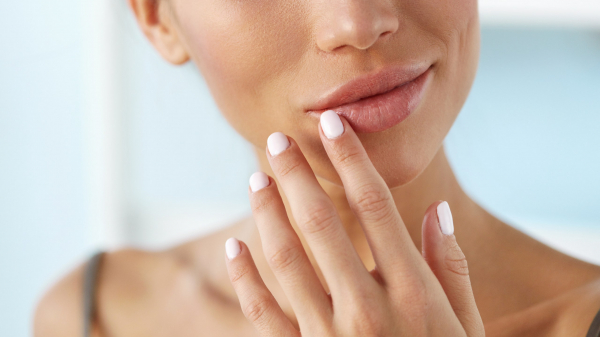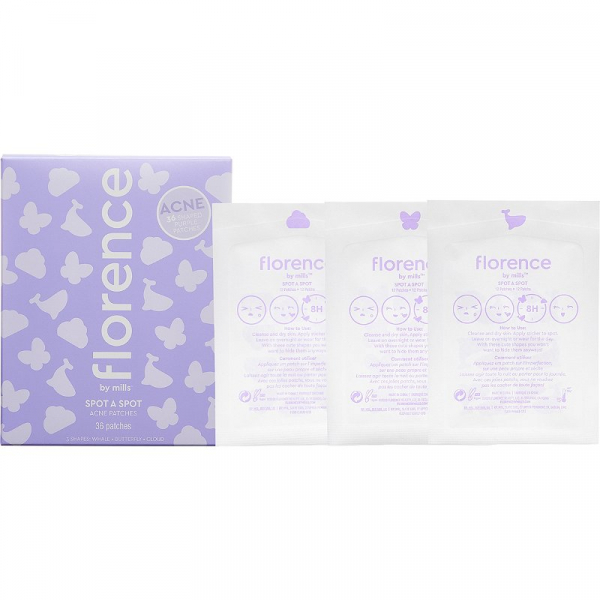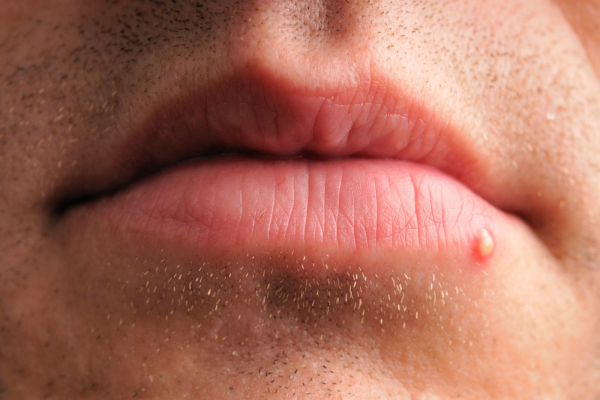 Getty Images
Getty Images
All products featured on Allure are independently selected by our editors. However, when you buy something through our retail links, we may earn an affiliate commission.
If you've ever had a pimple pop up in close vicinity to your mouth, chances are you've wondered — even if just for a millisecond — if said blemish could actually be a cold sore, also known as oral herpes. It's not an outlandish thought to have, either. Pimples and cold sores share certain similarities (especially in terms of appearance), which could easily elicit some confusion in someone who's suffering a breakout.
In actuality, pimples and cold sores on the lips share very little in common, making them pretty easy to distinguish from one another once you know what to look for. With that in mind, Allure tapped several dermatologists to find out the differences between pimples and cold sores, what exactly makes them so different from one another, and of course, how you can treat them should they arise. Scroll down for the lowdown.
- Cold Sore Causes
- Cold Sore Symptoms
- Single Bump vs. Cluster
- Cold Sore vs. Pimple Treatments
- How Long Do Cold Sores and Pimples Last?
- Emotional Impact of Lip Breakouts
What causes a cold sore?
Cold sores are caused by the herpes simplex virus-1, also called oral herpes or HSV-1, and they are contagious. The majority of people are exposed to the virus during childhood, but only 30 percent of people actually get clinical cold sores, says Friedman. You can catch the virus through direct skin contact, for example kissing or even using the same cup as someone with an active sore. From there, the virus pops out when your immune system is compromised or worn down, typically during times of emotional or physical stress, or if you're sick, explains Zeichner.
As most of us know, acne can also occur during times of stress, but that's where the similarities come to a halt. "Pimples can develop when hair follicles get infected with bacteria or fungus or blocked with a plug composed of oil, dead skin cells, and potentially other debris resulting in inflammation and bacterial overgrowth," says Shah. Friedman adds that all acne is inflammatory, and when inflammation brews around the sebaceous gland, it causes the area to swell and more sebum to be produced, ultimately resulting in what usually appears as a pus-filled pimple. Those with hormonal acne also experience pimples, most often around the jawline area, during their menstrual cycle or when their hormones are fluctuating. Such is not the case in cold sores, as it's a viral infection not impacted by hormones.
What are the early cold sore symptoms?
The simplest way to determine whether you have a pimple or a cold sore is to pay close attention to the warning signs. For instance, if you feel a tingling or burning sensation before the blemish even emerges, that's your body's way of telling you a cold sore is coming. "Often you may notice tingling, itching, or burning in the area before the blisters appear," explains Sejal Shah, a New York City-based dermatologist. This is known as the prodromal phase in the herpes simplex virus, which is when people experience changes in themselves (such as said burning) but haven't yet acquired any clear-cut symptoms.
Adam Friedman, the residency program director and director of translational research in the dermatology department at The George Washington University School of Medicine & Health Sciences, explains that this tingling or burning happens when the HSV-1 virus, which causes cold sores, leaves its home in a nerve root, called the dorsal root ganglion, and travels down the sensory nerves to the skin cells.
Can cold sores be a single bump like a pimple?
It's highly unlikely that a single, stand-alone bump is a cold sore. The tingling period of cold-sore development is followed by red, fluid-filled blisters, which Shah says usually come in clusters on or around the lips. The cluster can look like a small group of pimples, as the skin around the area will be quite inflamed and quickly form a scabby appearance, according to Joshua Zeichner, the director of cosmetic and clinical research in dermatology at Mount Sinai Hospital in New York City.
An active cold sore caused by HSV-1.
Getty
Pimples do not appear in clusters, nor are they directly on the lips. "Location is helpful with distinguishing acne, as while there can sometimes be free-standing oil glands on the lips, called fordyce spots, typically, there are no oil glands and therefore acne can't occur on the actual lip itself," says Friedman.
A pimple at the edge of a person’s lip.
Getty
What's more: While pimples may be tender or cause discomfort, they're not associated with the same prodromal phase as cold sores, says Shah. Pimples can also occur anywhere on the body, whereas cold sores caused by HSV-1 are resigned strictly to the mouth area.
How do cold sore and pimple treatments differ?
Pimples can be treated with skin-care products containing acne-fighting ingredients, like bacteria-killing benzoyl peroxide and exfoliating salicylic acid, as well as topical retinoids like tretinoin, adapalene, or tazarotene. In more severe cases, some people turn to drugs like isotretinoin (which you may know as Accutane). Some of our favorite over-the-counter spot treatments include the Best of Beauty Award-winners Vichy Normaderm S.O.S. Acne Rescue Spot Corrector and the Florence by Mills Spot a Spot Acne Patches, one of the best pimple patches (not to mention one of the cutest).

Vichy Normaderm S.O.S. Acne Rescue Spot Corrector
$18
Florence by Mills Spot a Spot Acne Patches
$14
Don't expect acne treatments to clear up a cold sore. Because cold sores are sparked by a virus, they need to be treated with antiviral medications, which can sometimes curb them from occurring altogether. "Cold sores can be treated with over-the-counter antiviral medications like Abreva," says Zeichner. "There are actually medications by mouth that you can take at the first symptom of burning and stinging, which prevent the cold store from developing to begin with. (One common treatment is called Sitavig). And needless to say, you should definitely never try to pop a cold sore the way you might try to pop a pimple. (Though you really shouldn't pop a pimple either.)

Abreva Docosanol 10% Cream
$19
How long do pimples and cold sores last?
Pimples and cold sores can both be considered chronic conditions. Though HSV-1 is never fully eradicated from the body because it's a virus, pimples generally become chronic based on a person's genetics and hormonal makeup. "Acne can be chronic, more often in women than men, as hormones can play a big role in perpetuating what was once thought of as a teenager ailment," explains Friedman.
The first time someone gets a cold sore, it can remain anywhere from two to four weeks; after that first time, it will typically resolve itself in a week or two, says Shah. She also says cold sores commonly reoccur in the same area. Pimples, on the other hand, usually have a shorter life cycle, often lasting a few days to a week.
What are the psychological impacts of cold sores and pimples?
Like any skin affliction, pimples and cold sores can both wreak havoc on people's emotional well-being. "Acne and cold sores are notorious for causing anxiety and stress," says Amy Wechsler, a New York City-based psychodermatologist. "They make people very self-conscious, and sufferers feel like the acne or cold sore is the only thing people see when they look at them."
That being said, if you battle either ailment, it's crucial to know you're far from alone. According to recent reports, 50 million people in the U.S. alone have acne, and 50 to 80 percent of U.S. adults have oral herpes (HSV-1). Though, as Friedman mentioned, only 30 percent of people amass actual clinical cold sores.
All this is to say: Cold sores and pimples are both incredibly common conditions that, while annoying, can be pinpointed and treated accordingly. Talk to your doctor to figure out a treatment solution together.


